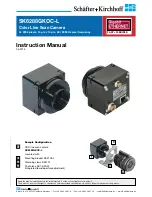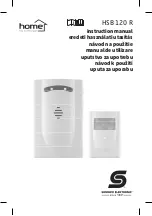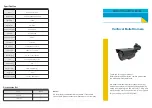
Tech Note
TN-0902 Date: 02/06/09
UsiNg a 2CCD Camera To CreaTe HigH-DyNamiC raNge images
Some imaging scenarios push dynamic range beyond the capabilities of the typical sensor. This is especially
true where incident light is present (e.g., imaging a light source and the surrounding area). This can also
occur in situations with bright reflections or in high contrast indoor/outdoor scenes where one needs to cap
-
ture details in both bright sunlight and dark shadows. One technique for dealing with these situations is to
combine or “fuse” two images with different exposures so that the dynamic range is significantly increased.
An illustration of this technique can be seen in the following images captured by JAI’s AD-081 camera. Here,
the incident light coming from the light bulb makes it impossible to examine both the bright and the dark
areas of this scene in a single exposure. Instead, two exposures are used as shown in Figure 1. The left half
of the image shows what the image looks like when captured with a slow shutter speed. This is able to
capture details in the surrounding areas while letting the brightest parts of the scene over saturate. The
right half of the image shows the result of a much faster shutter speed, enabling details to be seen in the
brightest portions of the image while rendering much of the surrounding area as nearly black. When “fused,”
as shown in Figure 2, the composite image is able to span the full dynamic range of the scene.
FIGURE 1 – Bracketing the exposure FIGURE 2 – Fused HDR image
In landscape or architectural photography, this effect be achieved with a single CCD camera taking two
consecutive images. However, in “live action” settings – such as industrial inspections, surveillance, vehicle
applications, and the like – the presence of motion requires simultaneous capture of the two images that are
to be fused. This can be done with two cameras, looking at the same scene. However, to avoid alignment is-
sues, it is best if the CCDs are in a single camera with a prism-based 2CCD arrangement. The AD-081 camera
from JAI uses this 2CCD prism-based approach to increase dynamic range while ensuring precise registration
of the two image streams.
Note:
in some industrial settings, it may be possible to use a one-camera scenario if the object being in-
spected stops briefly and the camera being used has the ability to automatically take two closely-spaced im
-
ages with dramatically different gain and/or shutter settings. JAI’s “sequence trigger” function supports this
approach, where feasible. It is available in many of the company’s C3 Camera Suite models with GigE Vision
interfaces.
Calibrating sensor response and output
In a 2CCD scenario such as the AD-081CL, establishing a high dynamic range image comes from fusing the
output of the two sensors to effectively increase the bit depth of the final image. The mathematical equa
-
tion for the display then becomes a function of the calibration of the 2 sensors. There are several strategies
that can be used.
























